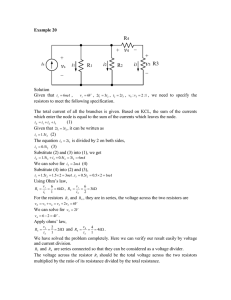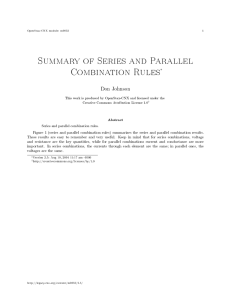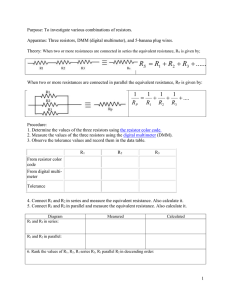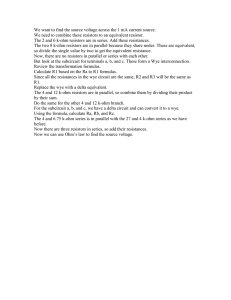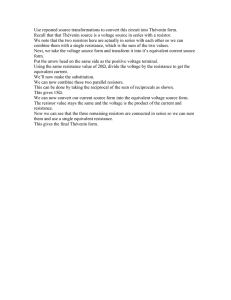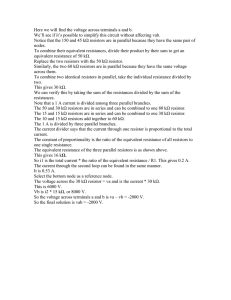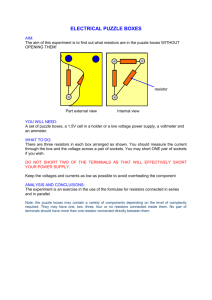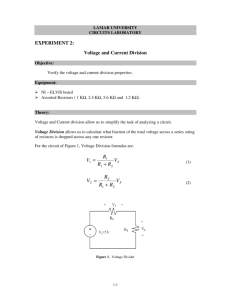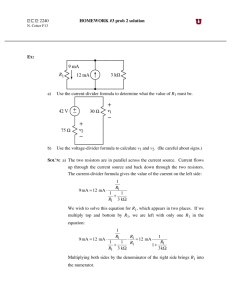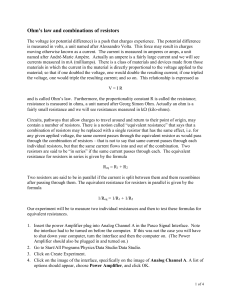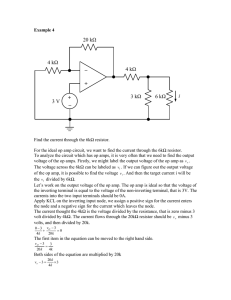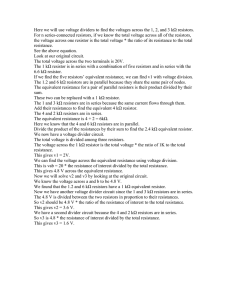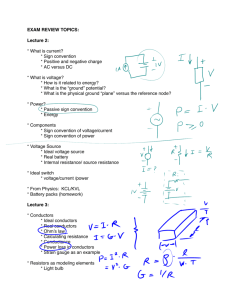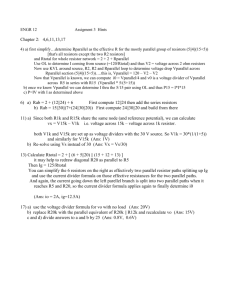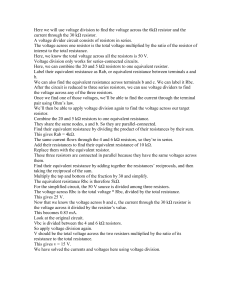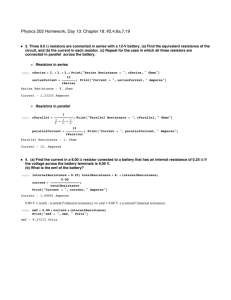Ohm`s Law - Adding Resistors in Series and Parallel
advertisement
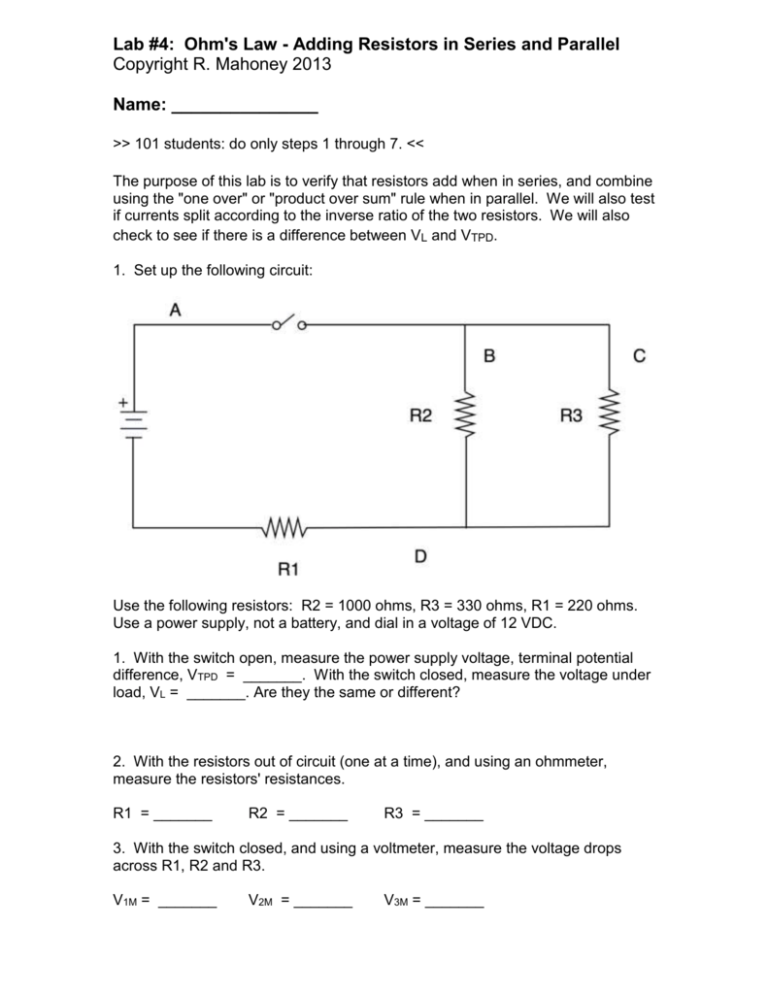
Lab #4: Ohm's Law - Adding Resistors in Series and Parallel Copyright R. Mahoney 2013 Name: _______________ >> 101 students: do only steps 1 through 7. << The purpose of this lab is to verify that resistors add when in series, and combine using the "one over" or "product over sum" rule when in parallel. We will also test if currents split according to the inverse ratio of the two resistors. We will also check to see if there is a difference between VL and VTPD. 1. Set up the following circuit: Use the following resistors: R2 = 1000 ohms, R3 = 330 ohms, R1 = 220 ohms. Use a power supply, not a battery, and dial in a voltage of 12 VDC. 1. With the switch open, measure the power supply voltage, terminal potential difference, VTPD = _______. With the switch closed, measure the voltage under load, VL = _______. Are they the same or different? 2. With the resistors out of circuit (one at a time), and using an ohmmeter, measure the resistors' resistances. R1 = _______ R2 = _______ R3 = _______ 3. With the switch closed, and using a voltmeter, measure the voltage drops across R1, R2 and R3. V1M = _______ V2M = _______ V3M = _______ 4. With the switch closed, and using an ammeter, measure the currents at points A, B, C and D. Be sure to hook your ammeter in series, and be sure to choose the right meter input jacks to not blow the meter's internal fuse. IA = _______ IB = _______ IC = _______ ID = _______ 5. Using the measured resistances (step 2), calculate the theoretical equivalent resistance of the circuit R EQ1 = _______. 6. Divide VL (step 1) by IA (step 4). This is the measured equivalent resistance, or R EQ2 = _______. 7. Calculate the % error between R EQ1 and R EQ2. % error = _______. 8. Using the measured resistances (step 2), calculate the ratio of R2 over R3. Ratio = _______. 9. Using the measured currents (from step 4), calculate the ratio of I C over IB. Ratio = _______. 10. Calculate the % error between the two ratios (from the last two steps; the ratio in step 8 is the true value). % error = _______. 11. Using the measured resistances (step 2), and the measured currents going through each resistor (step 4), calculate the voltage drop across each resistor. V1C = _______ V2C = _______ V3C = _______ 12. How does each calculated voltage drops compare to its measured values (for example, V1C versus V1M)? 13. Add IB and IC and compare the result to IA , and to ID. What do you notice? 14. State two non-trivial systematic errors for this experiment.
